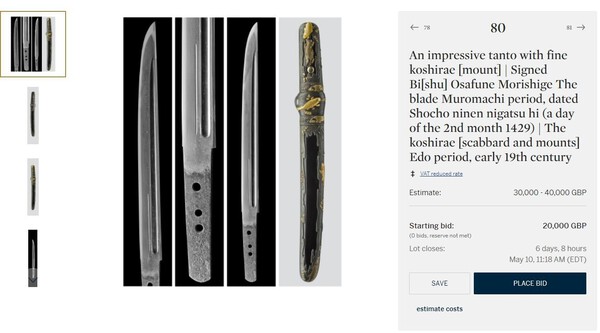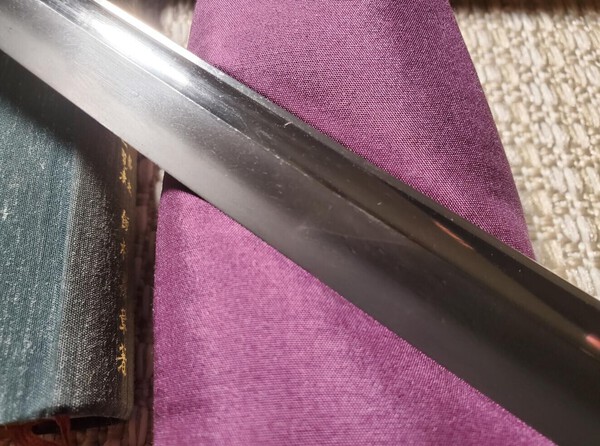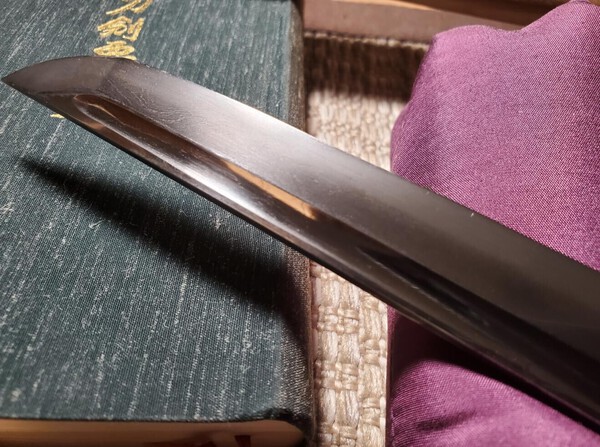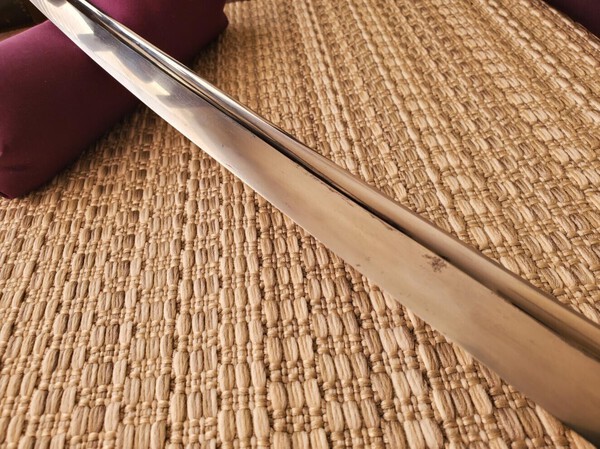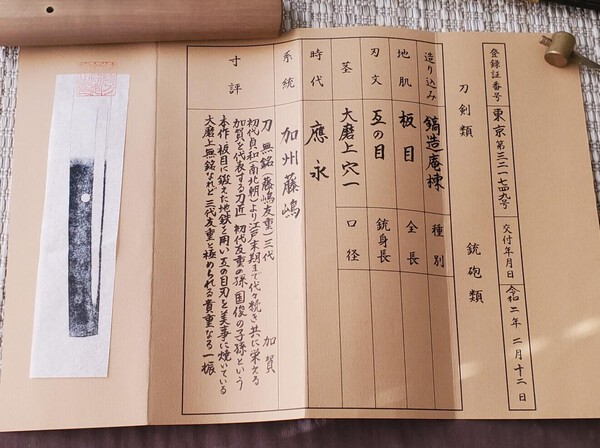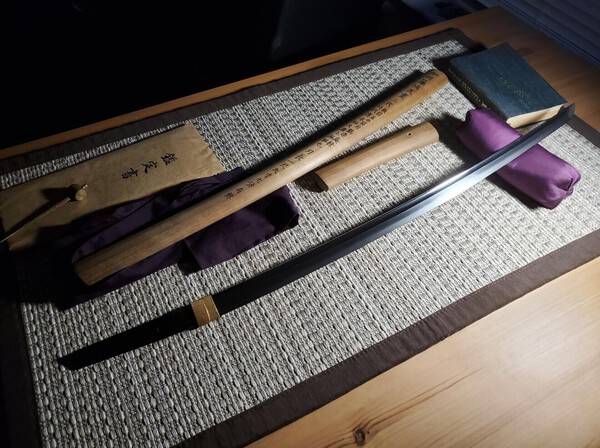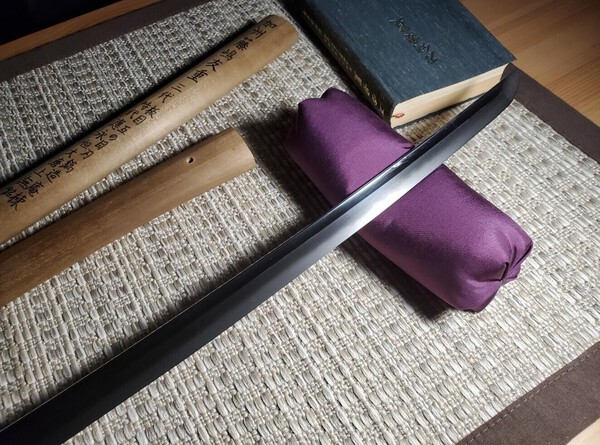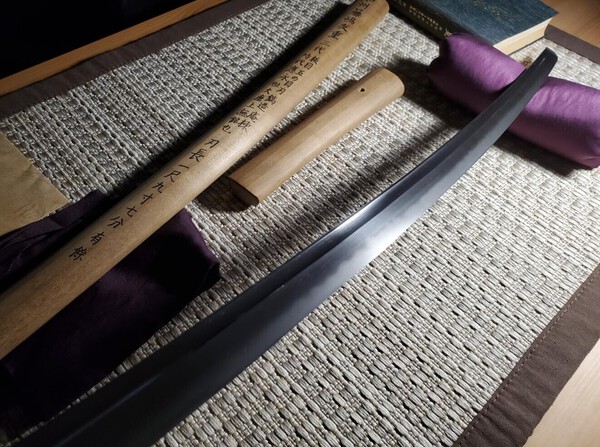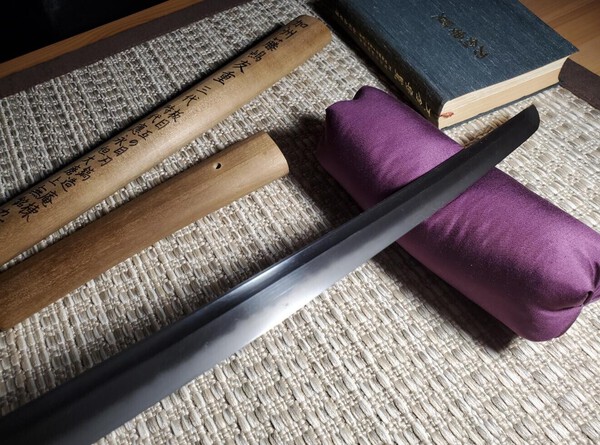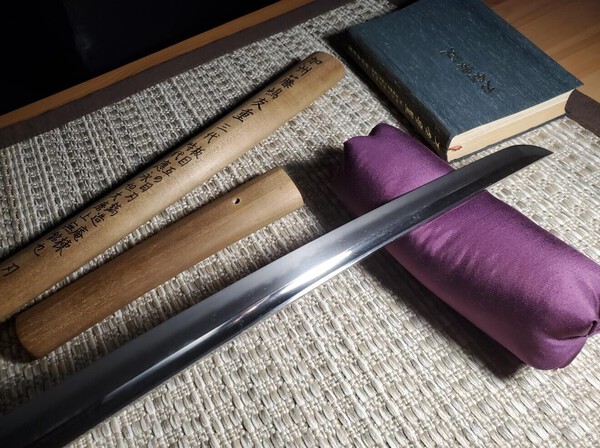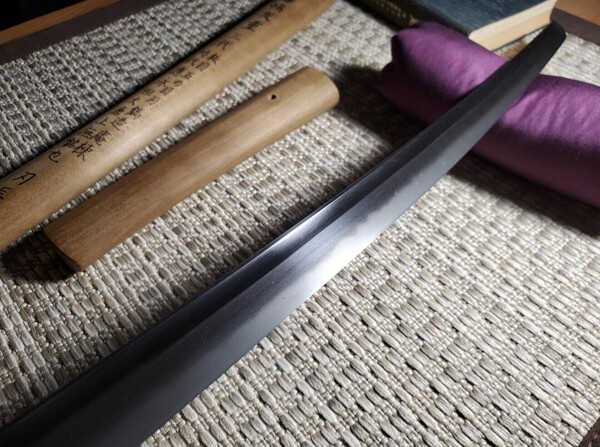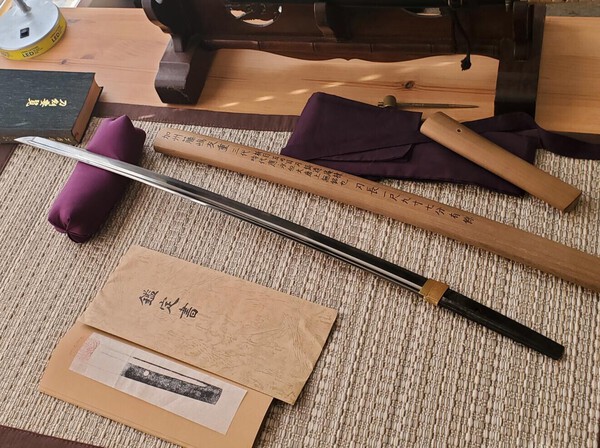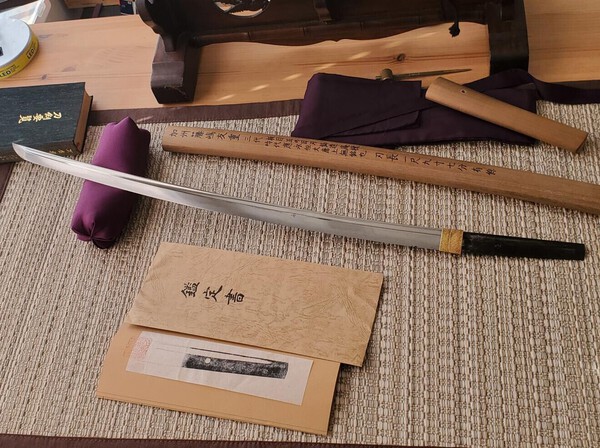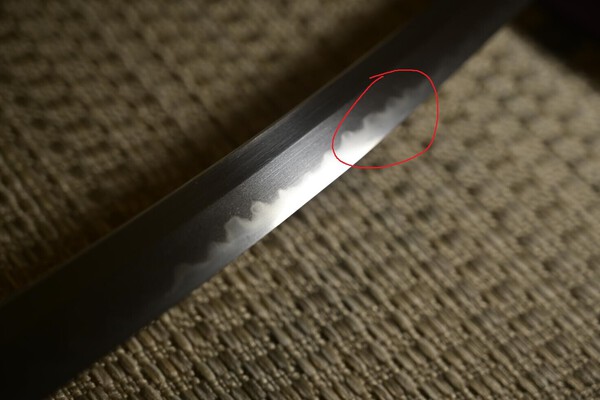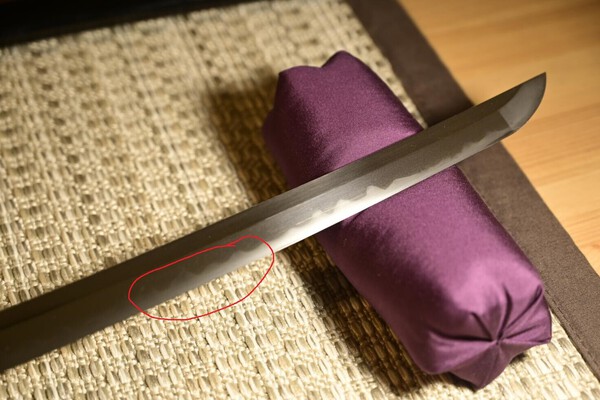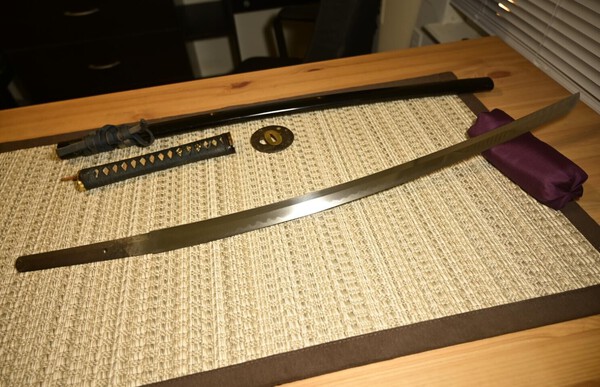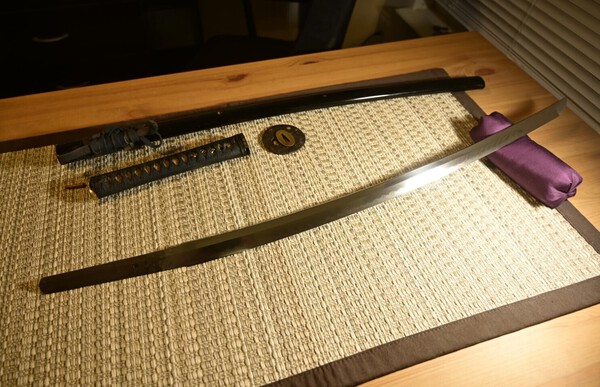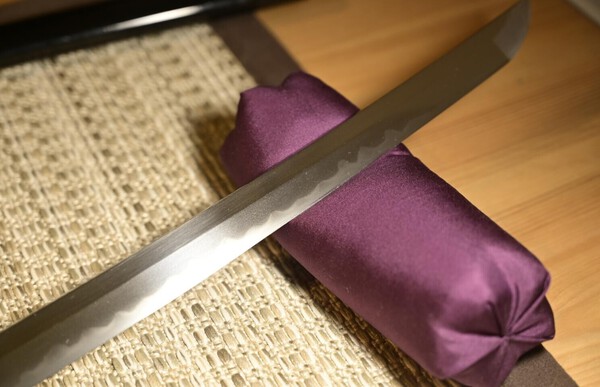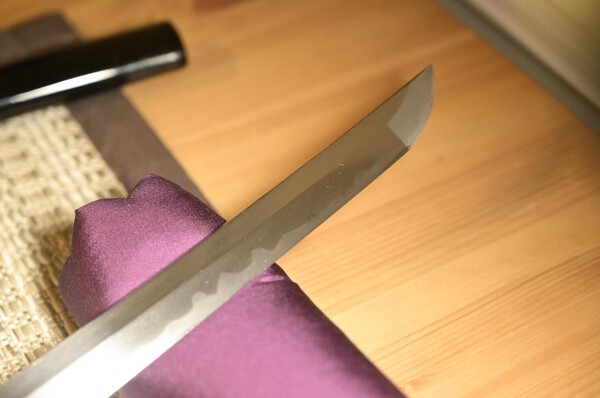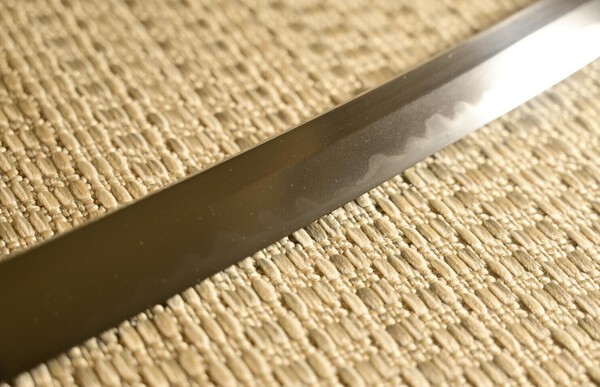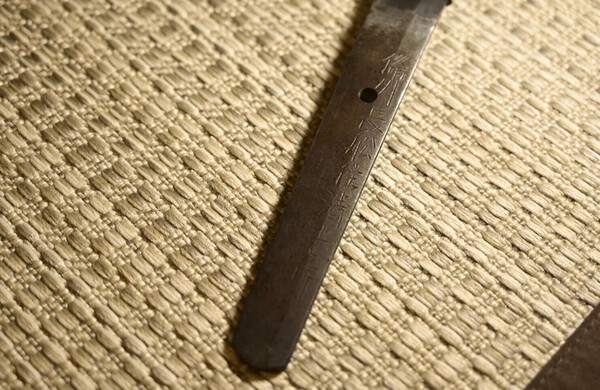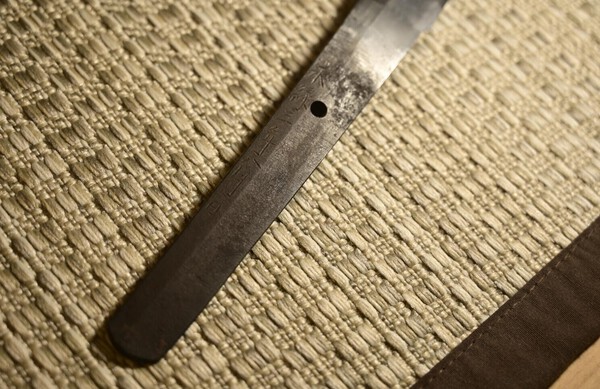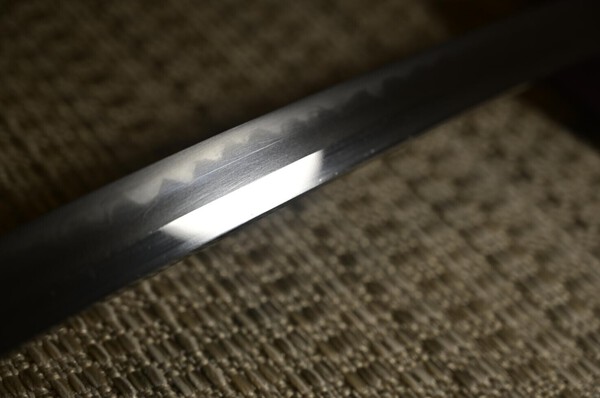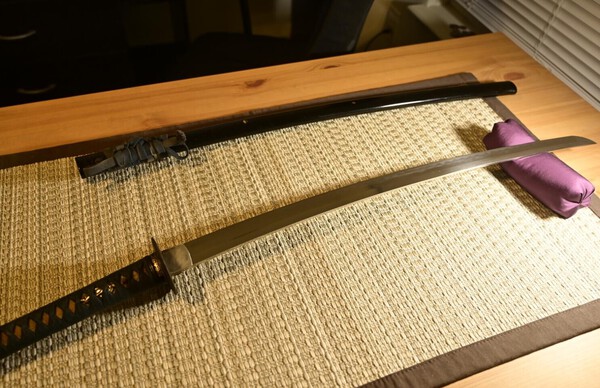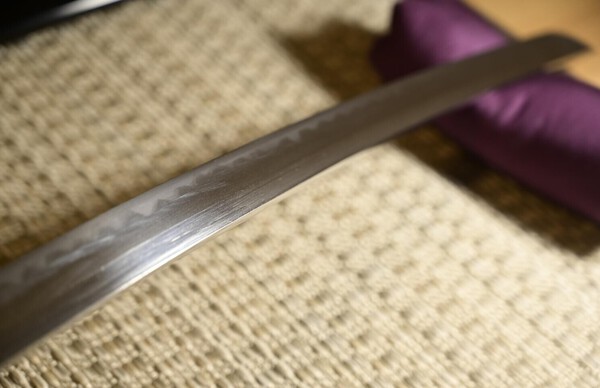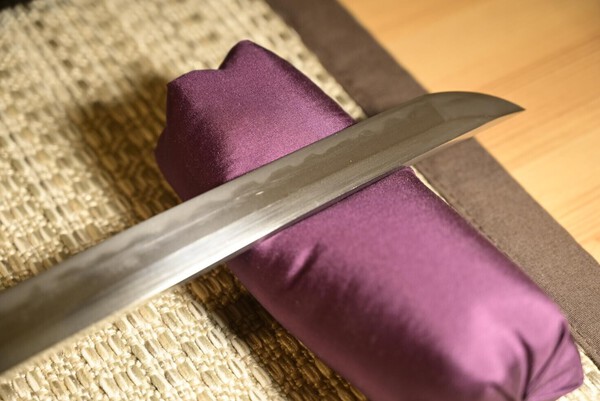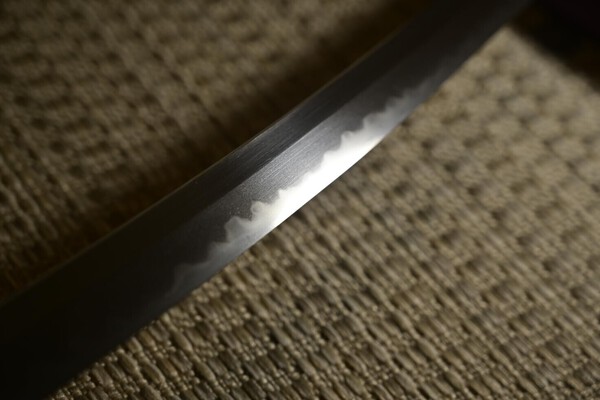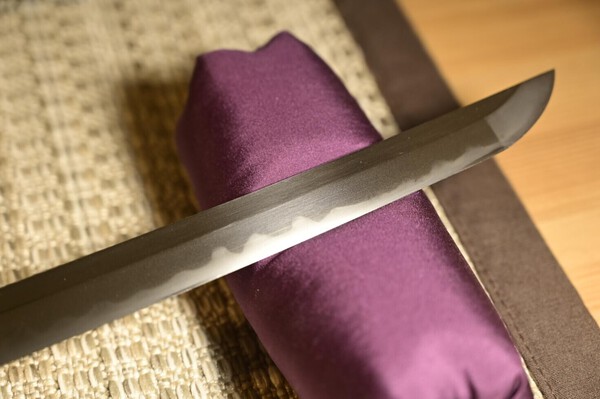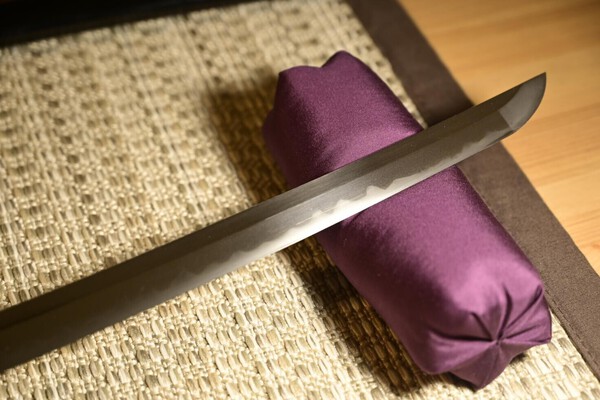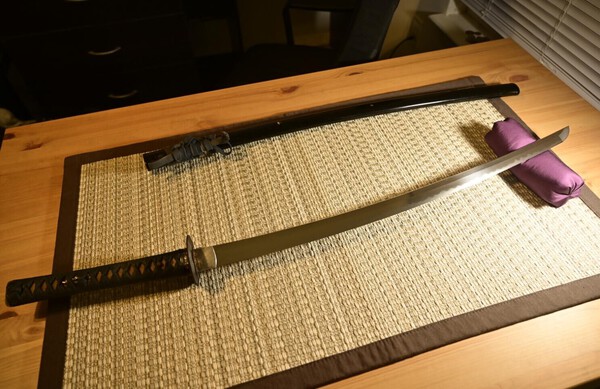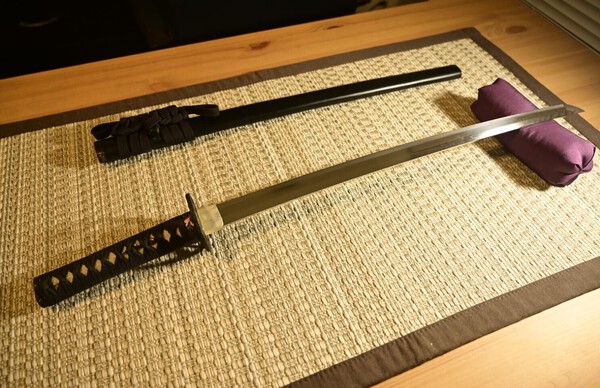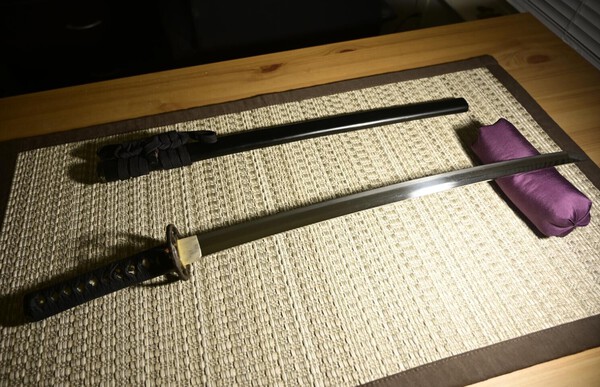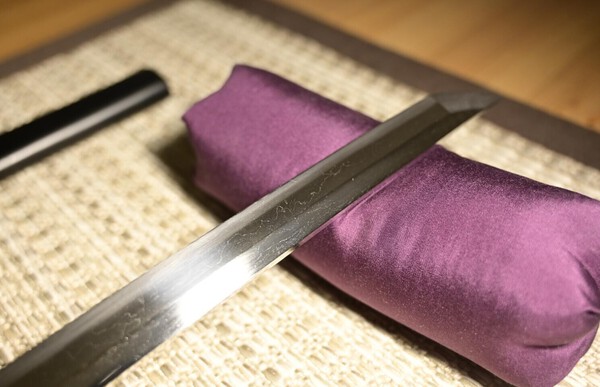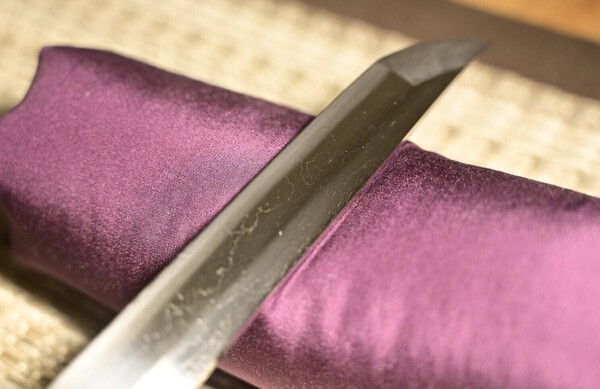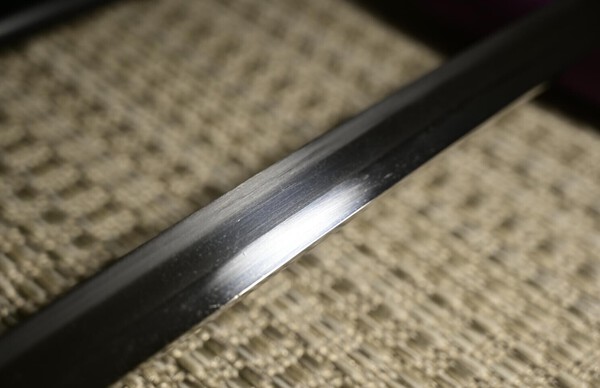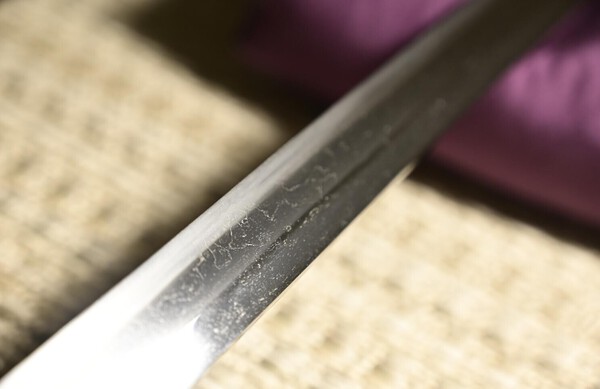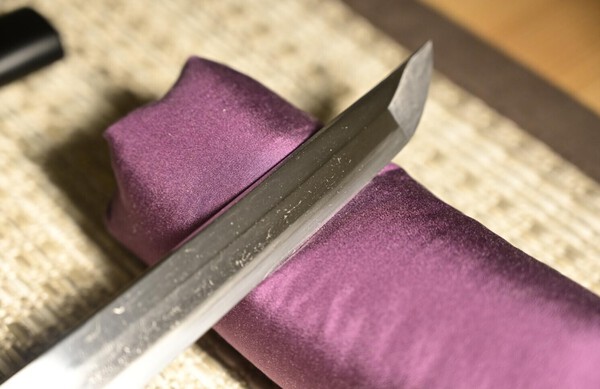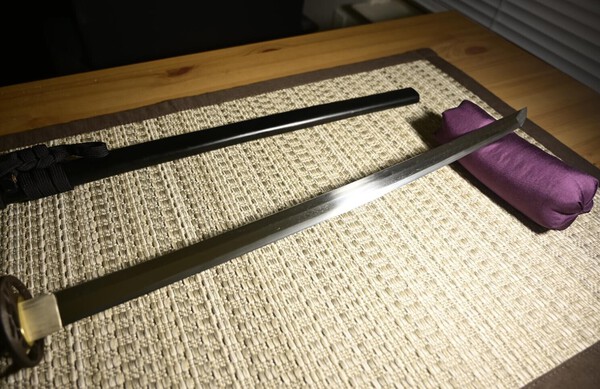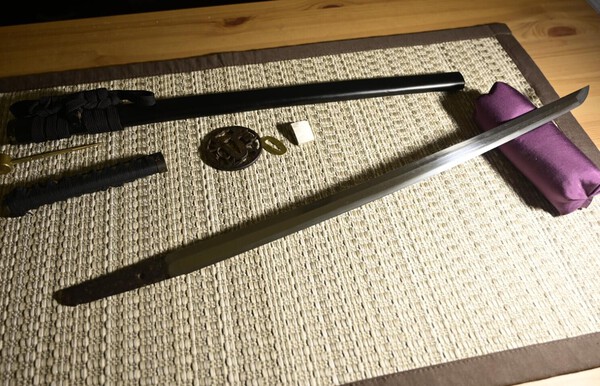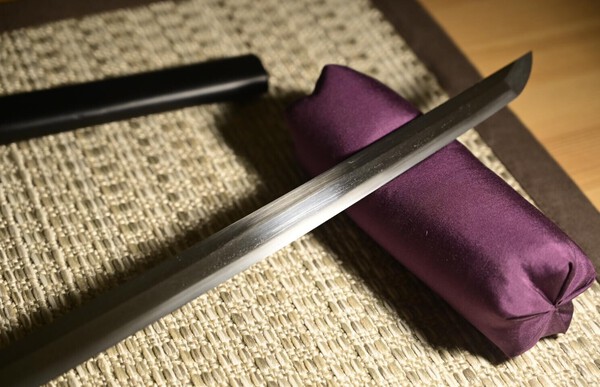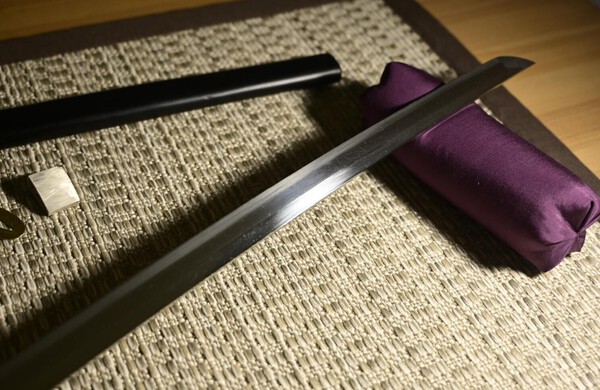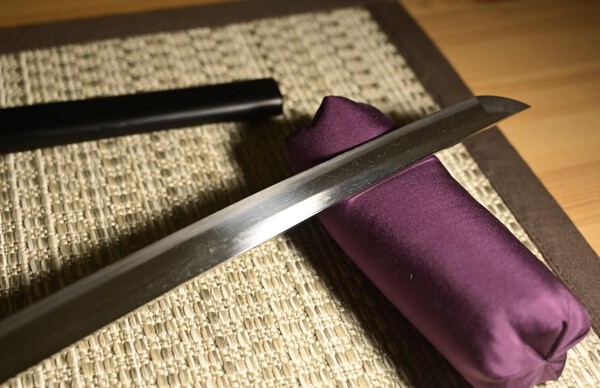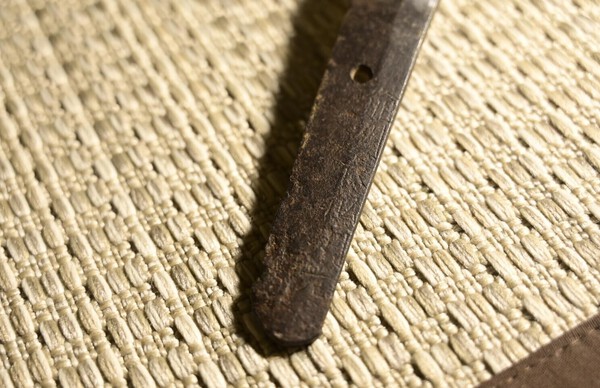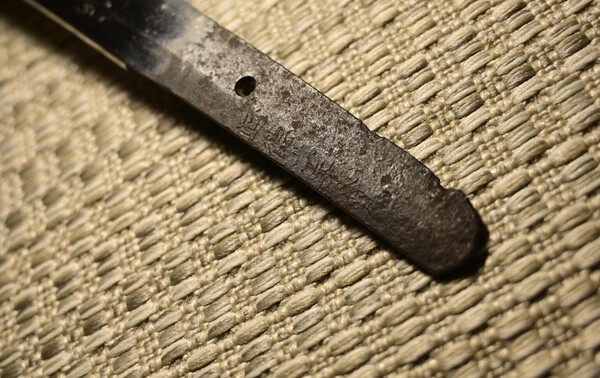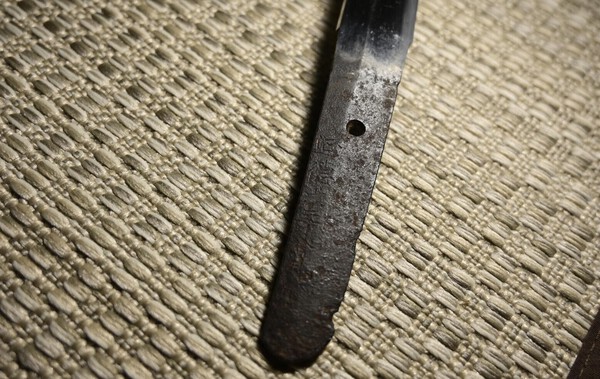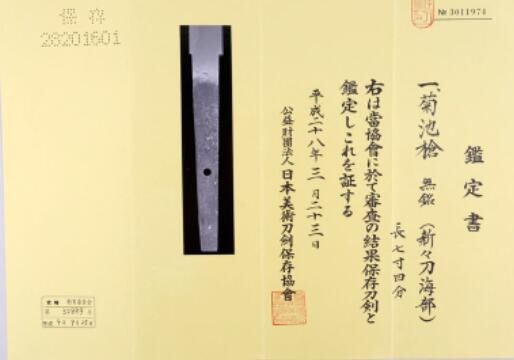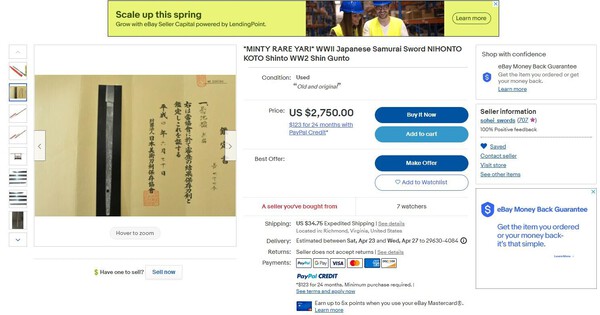-
Posts
120 -
Joined
-
Last visited
-
Days Won
1
Everything posted by WulinRuilong
-
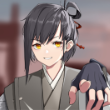
Sotheby's The Samurai Arms and Armour Auction.
WulinRuilong replied to Jon Masutatsu's topic in Katchu
The mei looks like Sukesada祐定. It seems not Morishige(but it also looke like Motoshige元重). The year looks like Daiei大永 Another point, they believe this sword is Osafune Morishige dated Shocho正长. But there is no smith named Osafune Morishige(or Motoshige) active in Shocho era. -

Sotheby's The Samurai Arms and Armour Auction.
WulinRuilong replied to Jon Masutatsu's topic in Katchu
-
Blade is overall in good condition but can find some signs of scars and stain on the blade(see pictures, can be easily removed by polisher, no fatal damage). This is an antique made in hundreds of years ago. There are imperfections or blemishes due to aging. Please see the pictures for details. Mei(Signature): Unsigned Maker: Fujishima Tomoshige(3rd gen) 藤島友重 三代 Blade length: 59.5cm Blade Weight: 479.0g Age: Early Muromachi period 1394-1428 應永 [Accessories] Cloth Bag Shirasaya Certificate paper Fujishima is the name of a place in Echizen Province and it is said that the first generation of Tomoshige lived here first then moved to Kaga Province later. The founder of the Fujishima school was Tomoshige, a pupil of Rai Kunitoshi. His work dates to 1334-1338. Tomoshige line of smiths who had ten generations of the name during the Koto period and six generations up until the Shintoshinto period. Price: $2200 (include shipping cost if you live in the US) Open to offers
-
-
there are a lot of crab claws can be found in hamon
-
"the samurais last will and testament" looks like just some note written by craftsman
-
Hello everyone, I bought this piece a few months ago. The blade length is around 66.3cm, some scratches can be observed, so I think maybe a polishing work should be done. This is an unpapered sword. I think it is stereotypic late Muromachi. The mei is Kiyomitsu and I assume it is legit. Would this be a correct assumption? Thanks everyone.
-
Sword registration paper is not nbthk paper. I am sorry you were fooled. Hope you didn't spend too much
-

Help identifying Muromachi period Wakizashi signed Norimitsu
WulinRuilong replied to WulinRuilong's topic in Nihonto
Since it is Ichimai Boshi, it has a fully tempered kissaki. So, the hamon can't "run out" into the kissaki -

Help identifying Muromachi period Wakizashi signed Norimitsu
WulinRuilong replied to WulinRuilong's topic in Nihonto
I think this is Ichimai Boshi -
This is one of my new acquired wakizashi. I think it is a Muromachi Wakizashi signed by Norimitsu. The Nagasa is around 52cm. It seems a katate-uchi. What is your opinion about this wakizashi? Does the blade need further polishing? Is it worth submitting it for shinsa?
-
I know many sword dealers in Japan bypassed this process.
-
I agree with Jean. This is a very poor-quality sword.
-
xx城下作之 x国 守正
-

I want to bid on this, but my rookie brain tells me to walk away?
WulinRuilong replied to MHC's topic in Nihonto
The mei looks like Norimistu則光 -
You don't really need a NBTHK paper to tell you it's a Kikuchi Yari, just like you don't need a NBTHK paper to tell you a sword is a katana or a wakizashi. This type of Yari has existed from the Kamakura period to the Edo period and can be found across Japan. What is the point of issuing such a paper? This paper literally has zero useful information. Usually, the paper should look like this
-
According to NBTHK shinsa criteria, Edo and earlier blades with correct mei, or mumei blades on which the time period, kuni and school can be identified, may receive Hozon paper. However, this paper doesn't identify anything!
-
Different branches of Tokugawa clan use different style of Aoi mon. The Aoi mon on this saya is not belong to any Matsudaira branch but only used by the Shogun family, Owari Tokugawa family, Kishū Tokugawa family and Mito Tokugawa family.
-
I saw a very strange NBTHK on ebay. It is a mumei Kikuchi Yari, but I see no maker/school/period be mentioned on the paper. I don't see any useful information on this paper, what do you guys think?


